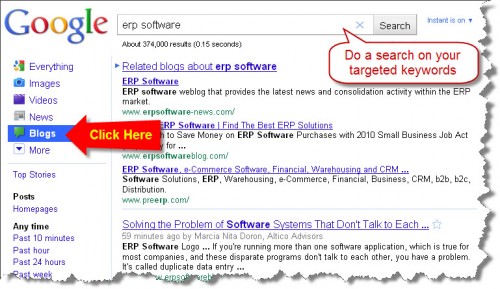Tips To Improve Your B2B Link Building Efforts
For the 12 years that I’ve been involved with SEO, one thing has remained constant…Content is King! And I’m not just talking about content for your own site but all across the World Wide Web. Savvy B2B marketers know that building inbound links is critical to the SEO success of good content. Here are some […]
For the 12 years that I’ve been involved with SEO, one thing has remained constant…Content is King! And I’m not just talking about content for your own site but all across the World Wide Web. Savvy B2B marketers know that building inbound links is critical to the SEO success of good content. Here are some practical link-building tips…
Link Building Methodology
That said, the approach to increasing the popularity and importance of your B2B website and the tactics used to build meaningful inbound links has dramatically changed over the years.
Creating the “ultimate” piece of B2B content, or application, or widget – that everyone will want to link to – is a terrific idea. But let’s face it, this is very difficult and can be quite time consuming; and honestly, only very few websites rise to the top with this approach.
Previously, many marketers have relied on two primary tactics for raising content visibility:
1. Come and get it. Not too long ago, B2B search marketers would create a piece of content or an application, place it on their website, and politely ask others to link to it. This approach was very time consuming and typically didn’t lead to many inbound links. (How many link requests do you ignore?)
2. Mass Submission. B2B marketers submit a single piece of content to 100’s or even 1000’s of business-related websites to obtain back links. It was easy! Heck, there was even software that automated the process. However, those days are gone. Submitting one piece of content to multiple sites is no longer an effective SEO method. Why? This mass submission approach causes issues with competing, duplicate content.
The New Way: Unique Content Development
Today, it’s necessary to actually create a unique piece of content for every industry site you distribute information to.
No, I’m not talking about MFA (Made For AdSense) sites that contain tons of meaningless information — designed only to generate ad revenue.
Rather, this process involves creating uniquely written content that is educational, informational, and engaging to the target audience and syndicated out to a network of high-quality, relevant sites — mostly blogs focused on your B2B sector.
The content provided to each site across the network can be similar… but must be unique and different enough to appeal to each site’s specific audience.
Build Your Own Blog Network
This approach is time consuming and labor intensive, but well worth the effort. It’s a win-win situation. You need links and blog owners need relevant, useful, unique content.
B2B marketers should create a “distribution network” by reaching out to blog owners in related areas and ask to syndicate your content to their site. Have you ever maintained a blog? Developing new content can be challenging. Most blog owners welcome the content and therefore your contribution.
The question asked most often in this approach is, how do I build my own network?
First, start with the obvious blogs or industry leaders you’re aware of and follow for relevant information. If you already receive daily RSS feeds or emails from these blogs, this is the obvious first place to start. Either comment on blog posts they’ve made and begin to develop that relationship over time, or simply contact the blog owner directly, tell them who you are and who you work for, and ask if they’d be open to syndicating your content.
The next best method is to simply go searching!
Let’s say your organization provides ‘ERP Software’. Simply go to Google, type in ‘erp software’ as your search query, then click on the ‘Blogs’ link you see listed in the left-hand column:
You can perform this same search for all of the keywords you’re trying to target and come up with literally hundreds, if not thousands, of blogs who very likely would welcome your content.
Optimize Your Inbound Links
Wouldn’t it be nice if you could, to some degree, control which sites link to you, where they link to on your site, and choose the keywords in the anchor text? Of course it would!
By creating unique (but related) content and proactively distributing it to a network of relevant sites/blogs you are able to directly influence and optimize anchor text and drive links to your most critical, internal website pages.
Boost Your ROI
By capitalizing on the right blog networks, you can dramatically increase the number of inbound links, increase your site’s deep link, improve rankings, drive qualified traffic and boost return-on-investment for your SEO/link-building program.
Contributing authors are invited to create content for Search Engine Land and are chosen for their expertise and contribution to the search community. Our contributors work under the oversight of the editorial staff and contributions are checked for quality and relevance to our readers. The opinions they express are their own.
Related stories
